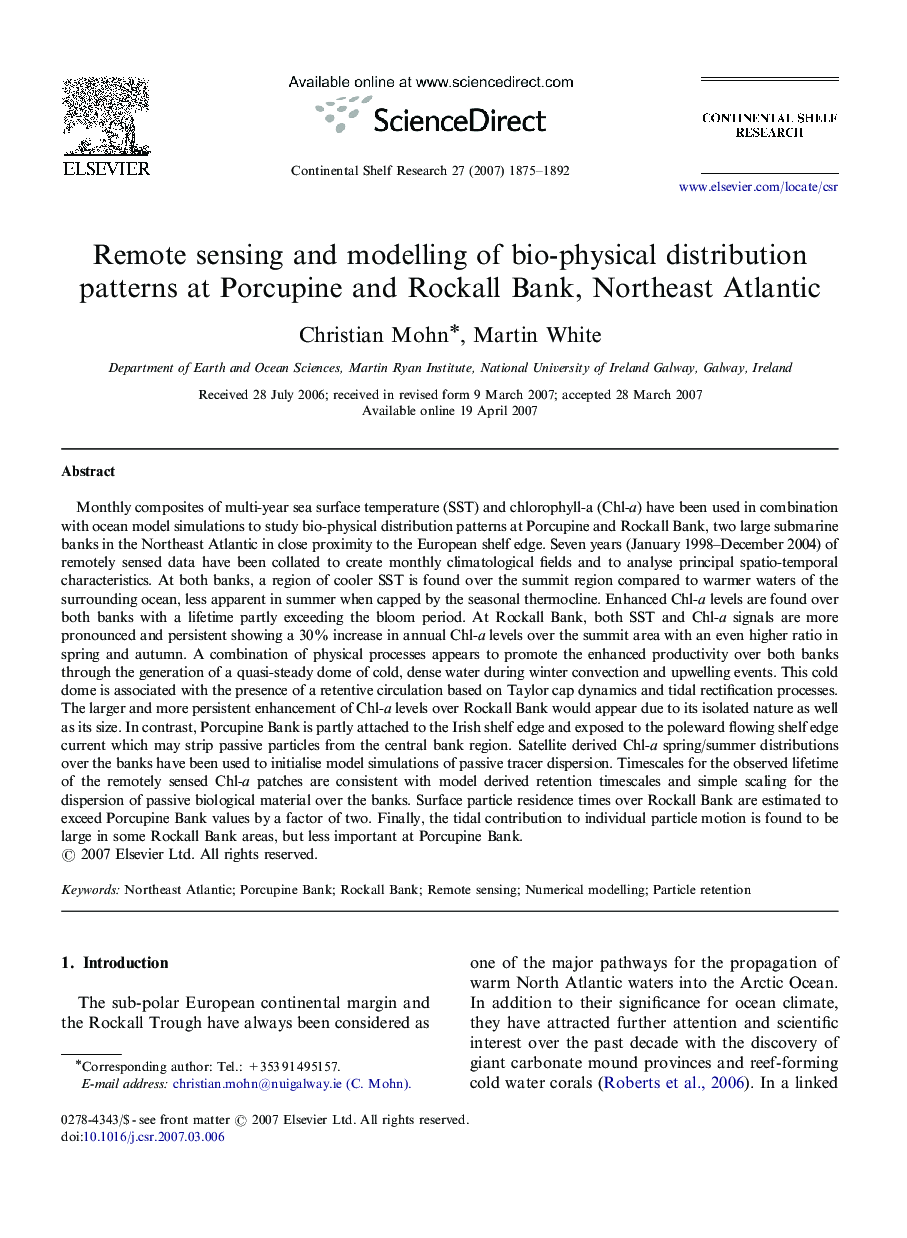| Article ID | Journal | Published Year | Pages | File Type |
|---|---|---|---|---|
| 4533397 | Continental Shelf Research | 2007 | 18 Pages |
Monthly composites of multi-year sea surface temperature (SST) and chlorophyll-a (Chl-a) have been used in combination with ocean model simulations to study bio-physical distribution patterns at Porcupine and Rockall Bank, two large submarine banks in the Northeast Atlantic in close proximity to the European shelf edge. Seven years (January 1998–December 2004) of remotely sensed data have been collated to create monthly climatological fields and to analyse principal spatio-temporal characteristics. At both banks, a region of cooler SST is found over the summit region compared to warmer waters of the surrounding ocean, less apparent in summer when capped by the seasonal thermocline. Enhanced Chl-a levels are found over both banks with a lifetime partly exceeding the bloom period. At Rockall Bank, both SST and Chl-a signals are more pronounced and persistent showing a 30% increase in annual Chl-a levels over the summit area with an even higher ratio in spring and autumn. A combination of physical processes appears to promote the enhanced productivity over both banks through the generation of a quasi-steady dome of cold, dense water during winter convection and upwelling events. This cold dome is associated with the presence of a retentive circulation based on Taylor cap dynamics and tidal rectification processes. The larger and more persistent enhancement of Chl-a levels over Rockall Bank would appear due to its isolated nature as well as its size. In contrast, Porcupine Bank is partly attached to the Irish shelf edge and exposed to the poleward flowing shelf edge current which may strip passive particles from the central bank region. Satellite derived Chl-a spring/summer distributions over the banks have been used to initialise model simulations of passive tracer dispersion. Timescales for the observed lifetime of the remotely sensed Chl-a patches are consistent with model derived retention timescales and simple scaling for the dispersion of passive biological material over the banks. Surface particle residence times over Rockall Bank are estimated to exceed Porcupine Bank values by a factor of two. Finally, the tidal contribution to individual particle motion is found to be large in some Rockall Bank areas, but less important at Porcupine Bank.
